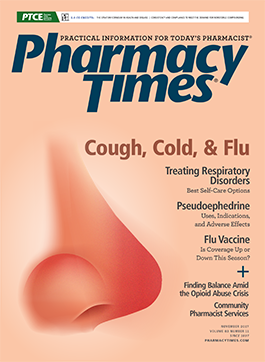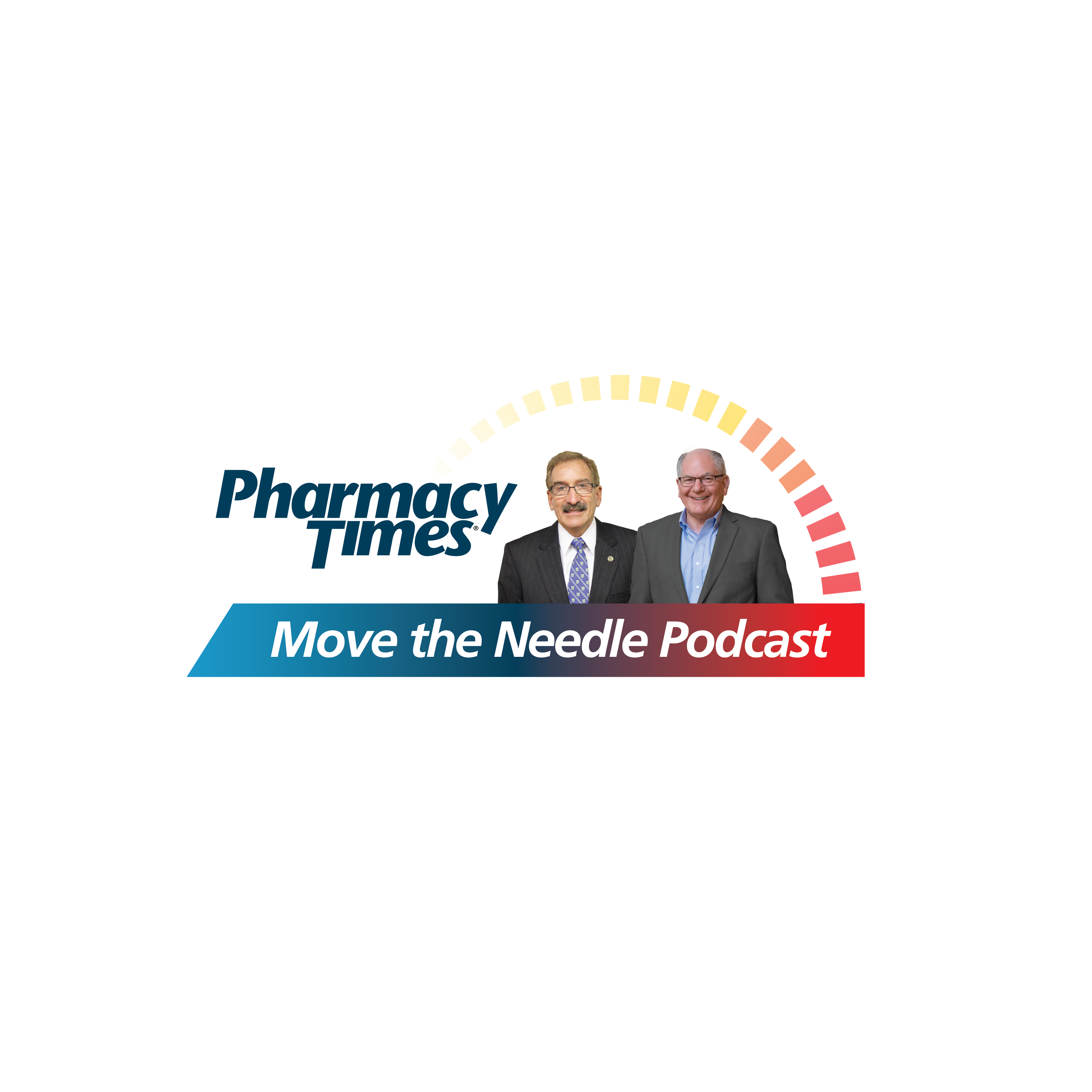Publication
Article
Pharmacy Times
Safe and Proper Use of Nonprescription Products for Cold and Flu Season
Author(s):
During this time of year, many patients are likely to seek counsel regarding the proper selection from the plethora of nonprescription products on the market to treat and manage the symptoms generally associated with the common cold and the seasonal flu.
During this time of year, many patients are likely to seek counsel regarding the proper selection from the plethora of nonprescription products on the market to treat and manage the symptoms generally associated with the common cold and the seasonal flu. For many patients, especially those taking prescription medications and those with other medical conditions, the selection of OTC products is overwhelming. Pharmacists can be an indispensable resource when it comes to aiding patients in the selection and proper use of these products and can also refer patients to seek further medical care from their primary health care providers when warranted. During counseling, pharmacists may also be able to help patients in distinguishing between cold and influenza symptoms (Table 11), and they should always seize this opportunity to remind patients about the safety and efficacy of the annual influenza vaccination and the importance of obtaining recommended vaccinations, especially if they are in the at-risk groups as indicated by the Advisory Committee on Immunization Practices.1
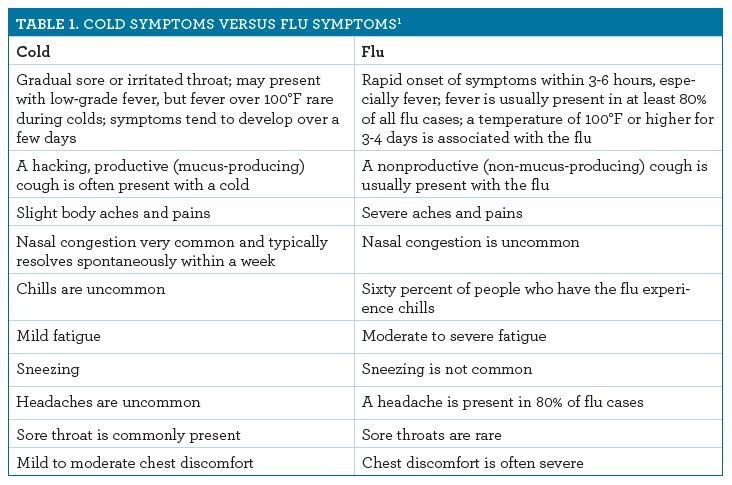
NONPRESCRIPTION PRODUCTS
For the symptomatic relief of the common symptoms associated with the management of cough, cold, and flu, nonprescription products include decongestants, antihistamines, expectorants, cough suppressants, antipyretics/analgesics, and anesthetic/antiseptic products (Tables 2, 3 and 4).2 These products are available in an array of dosage forms to meet the individual needs of various patient populations. Formulations of cough, cold, and flu products include single-entity products and combination products for multisymptom relief. To avoid the unnecessary use of medications or therapeutic duplications, patients should be advised to use caution when using multi-ingredient (combination) products. If patients elect to use a combination product, they should be advised to use only those products that contain ingredients to treat their specific symptoms.
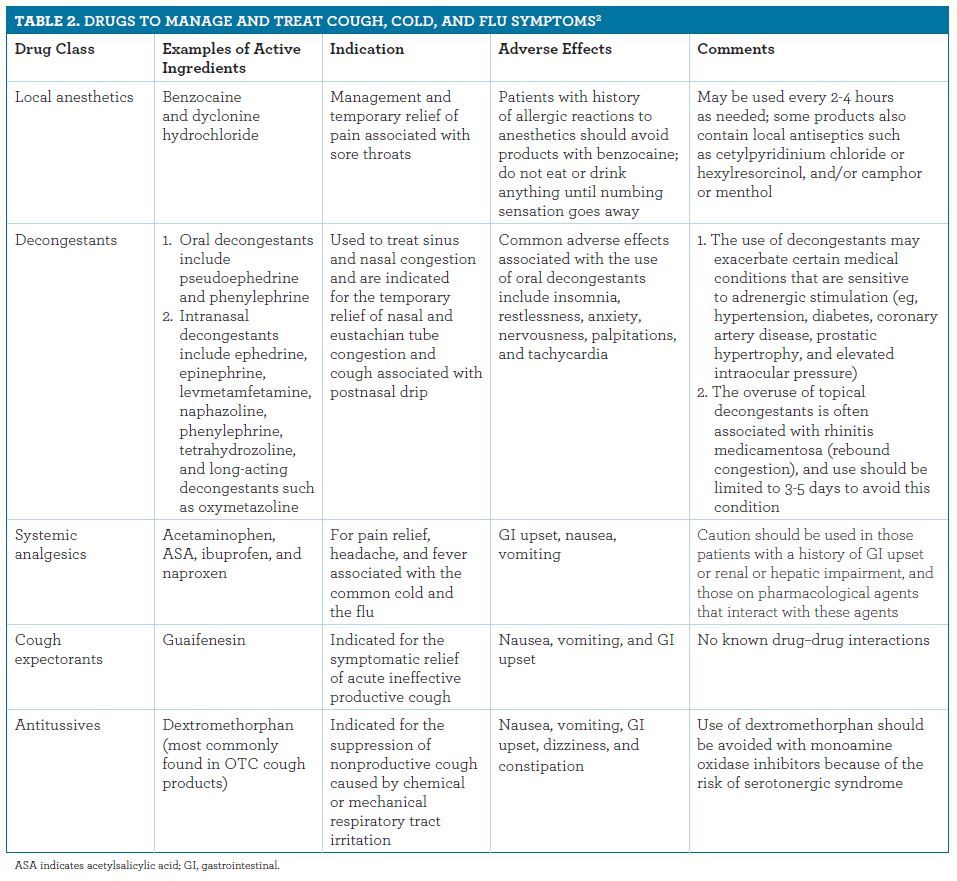
Prior to recommending any of these products, pharmacists should evaluate patients’ symptoms, as well as their medical and allergy history, and screen for potential drug interactions or contraindications. In addition to cough, cold, and flu preparations formulated especially for the pediatric patient population, there are also products formulated specifically for patients with diabetes that are free of sugar, alcohol, dextrose, sucrose, sorbitol, sodium, fructose, glycerin, and dyes. There is also a line of products marketed for those with hypertension.
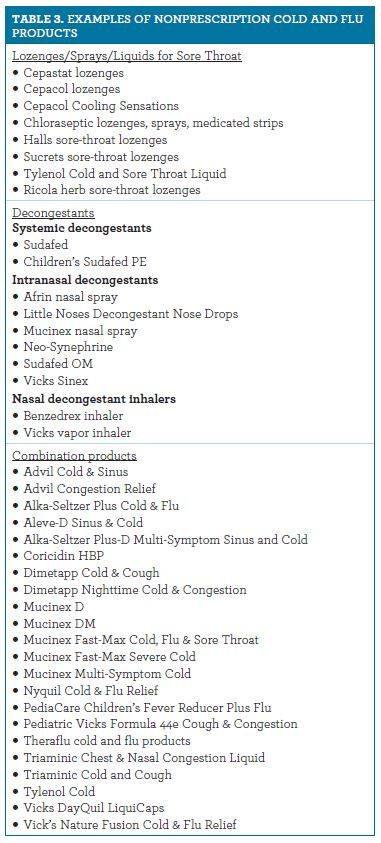
Studies have shown that various preventive measures such as routine handwashing, using alcohol-based hand sanitizers when soap and water are not available, avoiding direct contact with an individual with a cold or the flu, and always sneezing or coughing into a tissue are effective.
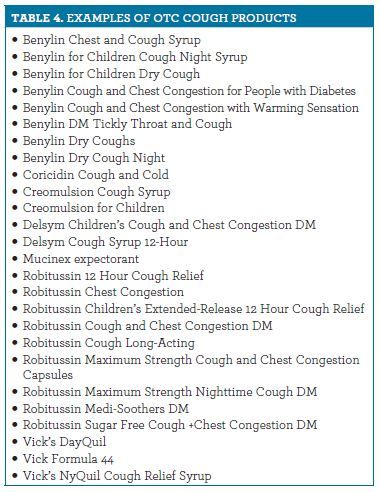
During counseling, patients should be reminded to read labels prior to administration and to check ingredients, especially if using multiple products, to avoid therapeutic duplications or excessive dosing. It is also imperative for patients to adhere to the recommended dosages, administration guidelines, and duration of use. It is especially critical for parents and caregivers to be reminded to always use calibrated measuring devices when administering liquids and to read all labels prior to administering medications to children to ensure proper dosage and accuracy. Parents and caregivers should give children only those nonprescription products manufactured specifically for the pediatric population and, when in doubt regarding the appropriateness or dose of the medication, consult their pediatrician or pharmacist. Pregnant and lactating females and those with chronic medical conditions should always confer with their primary health care providers prior to using any nonprescription medication.
Pharmacists should also seize the opportunity to stress the magnitude of obtaining an annual influenza vaccination as well as suggesting different non-pharmacologic measures that may help in providing relief of cold and flu symptoms, such as the use of vaporizers or humidifiers, saline nasal sprays, and non-medicated nasal strips to relieve nasal congestion. Patients should also maintain adequate hydration and rest. In addition, patients should also be encouraged to inquire about medical attention from their primary health care provider if they have a persistent sore throat, a cough that lasts more than 14 days or symptoms that worsen or linger, a high fever or shortness of breath, or signs of infection or dehydration.

Yvette C. Terrie, BSPharm, RPh, is a clinical pharmacist and a medical writer based in Haymarket, Virginia.
References
- CDC. Cold versus flu. cdc.gov/flu/about/qa/coldflu.htm. Published August 11, 2016. Accessed September 28, 2017.
- Scolaro K. Disorders related to colds and allergy. In: Krinsky D, Berardi R, Ferreri S, et al, eds. Handbook of Nonprescription Drugs: An Interactive Approach to Self-Care. 18th ed. Washington, DC: American Pharmacists Association; 2015.
